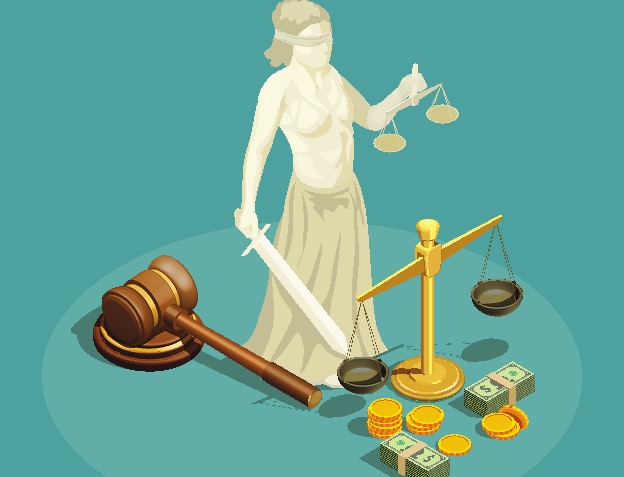
Grades 9-12
Happy EconEdMonth! Celebrate economics all month long by visiting EconEdMonth.org

Don't have an account yet? Sign up for free
Don't have an account yet? Sign up for free
Students will be able to:

In this economics lesson, students will complete a simulation to learn why certain industries get bailed out.
Warm-Up
The United States Government is no stranger to supporting the economy during hard times. Throughout U.S. history fiscal policy has been used to create programs, provide tax incentives or tax relief, support certain industries and even make direct payments to citizens. In 2020 the power of the U.S. government to “bail out” the economy was put to the test like never before as unemployment hit historic highs and entire sectors of the economy were essentially stopped in their tracks. In 2020, as in past recessions, a basic question surrounding the use of fiscal policy arose: Who should it be used for? Everyone? Only the most powerful industries in the economy? Only the industries who could make the case they needed it? In this lesson, students explore with those questions as they learn which factors go into answering who gets bailed out and why.
Ask students to write down (or type in a Nearpod or other virtual word cloud creator) the three industries they feel are the most important in the United States and the reasons for their choices. After giving the students up to two minutes to do this, ask several students to share and explain their answers. (Answers will vary, but make sure students defend their reasoning. The word important can mean lots of things including number of employees, overall size of the industry, number of exports, or students may just think of industries they use and are familiar with like video games, smartphones, etc. Students may also have varying interpretations of the word “industry.”)
Modeling
Explain that the class is going learn about the factors that go into deciding which industries get bailed out by the U.S. government. Open up the resource slides. Display Slide 1 and review the definition of bailout. Point out that for this lesson, you will focus on government bailouts.
Display Slide 2 and explain that because government bailouts use taxpayer dollars, they can be controversial.
Display Slide 3 as you distribute Handout 1: US Bailout History. Alternatively, you could have students read this on their devices using this link to the reading in a Google document. After reading use the following questions to guide a 5-7 minute class discussion.
This link from ProPublica provides information about many of the banks who received money in 2008 and their repayment status: https://projects.propublica.org/bailout/list/simple ) 5. Display Slides 4 and 5. Explain that now the students are going to get to make some decisions about bailouts through a simple simulation. Review the rules on Slide 5.
Distribute Handout 2: Bailout Decisions to each student.
Display Slide 6 to review the industries that are in the discussion for a bailout and remind students they may not add to the list. Use the speaker notes at the bottom of Slide 6 to ensure students are familiar with each industry.
Group Activity
Divide the students into groups of five or six. Tell the students they have two minutes to discuss which, if any, industries they wish to bail out. They may discuss as a group, but their vote is their own and they are not required to come to consensus at this time. They should write their final answers in the Round 1: Personal Preferences portion of Handout 2.
When finished, take a quick vote on how many students chose each industry. You can do this by displaying Slide 7 and entering the information on the slide, on a white-erase board or chart paper or through a virtual polling software. If you have a free Socrative.com account, a poll is pre-made for you here: https://b.socrative.com/teacher/#import-quiz/51932104
Ask a few students to share the reasons for their choices. (Answers will vary, but again make sure students defend their reasons).
Explain that when real members of Congress make decisions they take more than their personal feelings into account. Distribute Activity 1: Economic Information. Three per group should suffice.
Display Slide 8. Students need to consider how these industries differ in key areas. Pro sports has fewer employees, but when a sports team is not playing, it affects MANY other jobs like vendors, parking lot owners, hotels and restaurants in the city, uber and Lyft drivers etc. While more people work in retail, their multiplier is less as one retail job doesn’t have much impact on others. In fact, if the store can replace that retail worker with a machine that lets the customer order or check out and pay on their own, the multiplier of that retail job is even less. Students may be surprised by the manufacturing number. An assembly line worker needs someone to repair the assembly line, deliver materials, provide uniforms and safety equipment, etc. Make sure students understand the data.
Have students discuss the data in their groups for four to five minutes and record their decisions in light of this new information in the Round 2: Economic Information section of Handout 2.
Repeat procedures 9 and 10 using Slide 9 if desired.
Tell students there is at least one more factor that goes into the decision of who gets bailed out – the fact that they are elected officials. Display Slide 10 and point out that as an elected official, their vote on this issue will be public. Politicians need to consider the impacts on their constituents, lobbyists, and any campaign promises they made.
Distribute one set of Activity 2: Congressional District Information cards so that each student in the group of six gets one card. In groups of five it is okay to leave one card out.
Tell students they are now to assume the role on their card. Tell the students to get into the role as much as possible, even if they personally disagree with it. These cards are based on the actual members of Congress that come from these districts.
Give students five to seven minutes to read their cards and discuss with their group. Tell students this is their last vote and they can make deals with group members if they want to or try to argue and convince other to join their side.
Tell students to record their final votes in Round 3: Congressional District Information.
Repeat procedures 9 and 10 using Slide 11 if desired.
Individual Activity
Display Slide 12 and conduct a class discussion centered around the questions. Discussion points and potential answers are found below:
If this class was congress, who would get bailed out? (Answers will depend on tally marks from slide 11)
(Answers will vary, but students taking the simulation seriously should answer harder. As you get more information, the cost/benefit structure changes and your decision-making might change. This is true for most economic decisions – the more information you have leads to better decisions, but tougher ones as well.)
Finish by reminding students the government plays a large role in the U.S. economy by collecting taxes and spending money on public goods and services. They also redistribute income and, in some situations, specifically target certain industries when they feel is needed. The reasons certain industries are selected are complex, controversial and can change with political whims.
Have the students complete the assessment questions on the bottom of Handout 2. This can be used as a class discussion or submission for a grade. Answers will vary on these, but some things to consider when evaluating answers are below:
Google Docs
Click on the link below to find a shorter activity based on this lesson.

Grades 9-12

Grades 9-12


Grades 9-12
